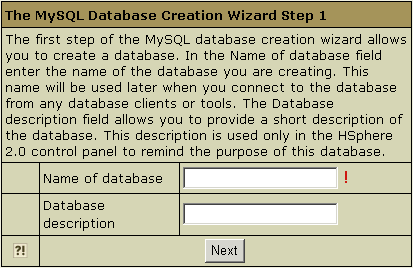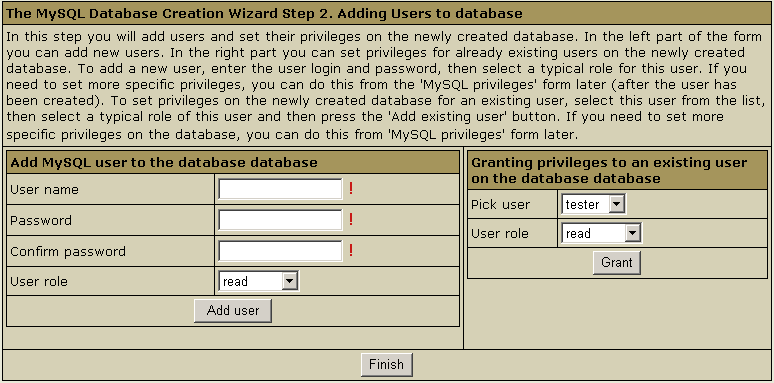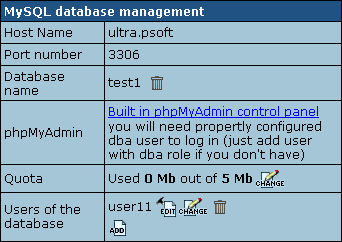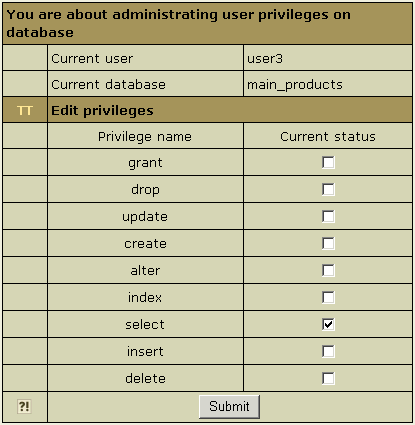Hosting MySQL Databases

MySQL is a database management system.
It allows you to add, access, and process stored data. The SQL part of
MySQL stands for "Structured Query Language" - the most common
standardized language used to access databases.
Creating MySQL Database and Its Users
MySQL users cannot exist separately from MySQL databases. You must stick
to the following sequence:
- Create a database
- Add MySQL users to each created database.
However, MySQL users can be shared by different databases.
To create a MySQL database, do the following:
- Select MySQL in the Databases menu
and a MySQL DB creation Wizard automatically appears.
-
On the form that shows enter the name of the database and database
description if needed:

- Agree with additional charges if any.
- In the form that appears, create a new user or grant
privileges to users of other databases:

- Add a new user to the database you have just
created. User roles are explained below. Click Add
user.
- Choose roles for users of other databases so
they can use your new database. Click Grant.
- Click Finish to complete creating your MySQL
database.
Editing MySQL
databases (phpMyAdmin)
You can edit the content of your databases using the phpMyAdmin utility
that comes with your control panel. To run phpMyAdmin, do the following:
- Select MySQL DBs in the Databases menu.
- In the form that appears, click the name of the existing
MySQL Database you want to edit or the Edit icon on its
right:

-
In the form that appears, click Built in phpMyAdmin control panel
to start editing your database:

- Follow the instructions of the phpMyAdmin control
panel to edit your MySQL DB.
Changing MySQL disk quota.
MySQL disk quota is the maximum allowed size of one MySQL database.
If you exceed this quota, you'll be charged for overlimit at a different
(usually higher) price.
To change MySQL disk quota, do the following:
- Select MySQL DBs in the Databases menu.
- Click the MySQL Database or the Edit
icon on its right:
-
Click the Change button against the Quota field:

- Enter the new quota.
- Click Submit.
- Agree to additional charges.
Changing user passwords.
To change user password in the MySQL database, do the following:
- Click the MySQL Database
.
- In the form that appears (see above), click the Change
password icon next to the DB user.
Adding MySQL users and granting them
privileges.
Here you will learn how to add new users to an existing MySQL database.
- Select MySQL DBs in the Databases menu.
- Click the MySQL Database or the Edit
icon on its right:
- On the form that shows, click the Add icon
against the Database users field.
-
Fill the following form:

Each user role involves a fixed set of privileges on this specific
database:
|
Role: |
Set of privileges: |
| read |
select |
| read/write |
select, insert, delete, update |
| dba |
select, insert, update, drop, create, alter, index |
- Click the Add or Grant button and agree
to additional charges.
- To edit privileges, click the Edit icon next
to the user. You will be brought to the Privilege Maintenance page.

- Check or uncheck the desired privileges and press
the Submit button.
Note:For more information on MySQL
access privileges, please refer to www.mysql.com.
IMPORTANT:
any changes in user privileges will be applied to the whole selected database.







